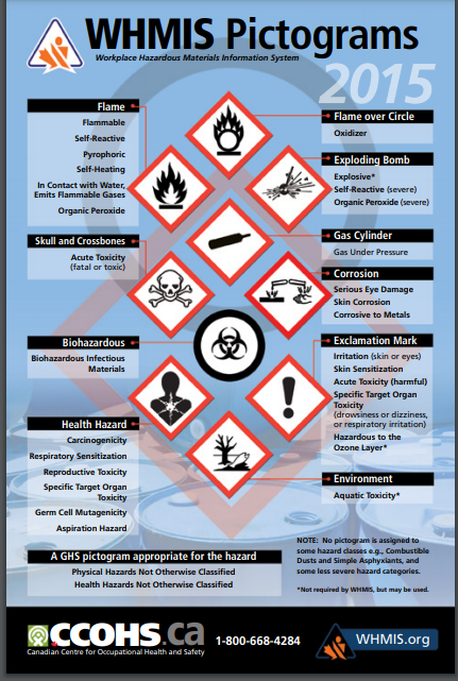Workplace Safety -
Workplace Hazardous Materials Information System
WHMIS is a workplace standard for the classification and communication of hazardous materials. There are three main parts associated with WHMIS. The employer must ensure that the three parts below are adhered to when hazardous materials enter and are used in the workplace.
While SVS does not carry, control or maintain any Hazardous Materials, our employees will be working in locations where they will be present. The safe storage and use of these materials is the responsibility of the property (marina, boat yard, private residence etc) and the boat owners. Nevertheless, SVS employees must be aware of these materials.
- Labels- ensuring that all hazardous materials are properly labeled
- Safety Data Sheets- ensuring that every hazardous material entering the workplace has a safety data sheet that is readily available for employees to access
- Training- ensuring that all employees who work with or could come into contact with hazardous materials in the course of their work have received WHMIS training
While SVS does not carry, control or maintain any Hazardous Materials, our employees will be working in locations where they will be present. The safe storage and use of these materials is the responsibility of the property (marina, boat yard, private residence etc) and the boat owners. Nevertheless, SVS employees must be aware of these materials.
Potential Worksite Hazards:
We also need to watch for
As for other potential hazards we have in our work
We spend a lot of time probing around electricals, and working at height. Those frankly are probably our biggest potential hazards. For more on WHMIS, please visit the official website: WHMIS.org
|
Read the SVS WHMIS Policy:
| ||||||
About the labels
Consumer products, which are available to the public in retail stores, are exempt from the labeling and MSDS requirements of WHMIS. However, they can be purchased and brought into the workplace and, if they would otherwise meet the criteria of a controlled product they are not exempt from the training requirements of WHMIS.
Consumer products have their own labeling system which is defined in the Consumer Chemicals and Containers Regulation under the federal Hazardous Products Act. Since these products can be brought into and used in the workplace, it is important to understand these labels.
The labels generally display a border or shape that indicates the degree of risk - caution (triangle), warning (diamond), or danger (octagon) and a symbol or pictogram inside the border that indicates the type of hazard: toxic or poisonous products, flammable products, corrosive products, and pressurized or explosive.
Consumer products have their own labeling system which is defined in the Consumer Chemicals and Containers Regulation under the federal Hazardous Products Act. Since these products can be brought into and used in the workplace, it is important to understand these labels.
The labels generally display a border or shape that indicates the degree of risk - caution (triangle), warning (diamond), or danger (octagon) and a symbol or pictogram inside the border that indicates the type of hazard: toxic or poisonous products, flammable products, corrosive products, and pressurized or explosive.
MSDS for typical workplace hazards:
| svs.safety.msds.lead_acid_battery.odt | |
| File Size: | 55 kb |
| File Type: | odt |
